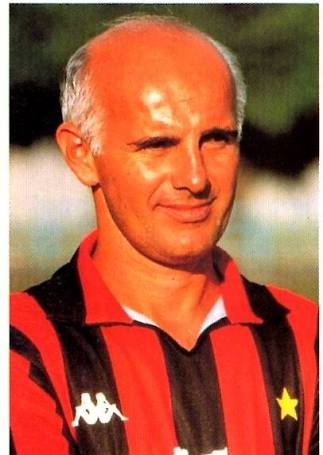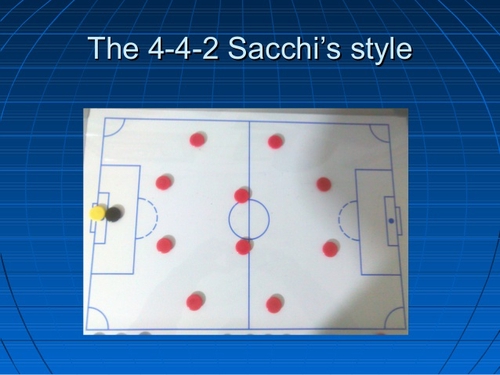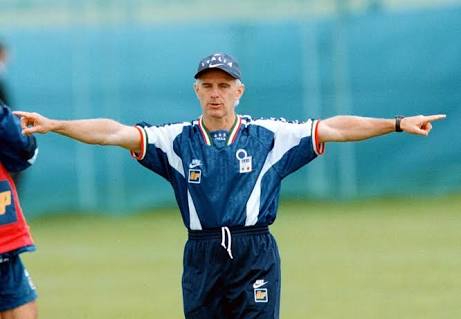
A UNIQUE PRESSING STYLE AND REFORM OF ITALIAN FOOTBALL UNDER A MAN WHO NEVER PLAYED PROFESSIONAL FOOTBALL
Football over the course of time has evolved a lot. Tactical managers left their mark on the sport by the reforms they brought into the game. Johan Cruyff and Arrigo Sacchi are two of those managers who reformed football forever in mid 1980s and 1990s. Barcelona players and managers have kept Cruyff ideology trending in the world even now while Sacchi has been forgotten.
Sacchi is a legendary AC Milan and Italy manager who changed the definition of Italian football and gave it a new direction, a direction that made Italian clubs and Serie A best in the world few years later.
Sacchi became the manager of AC Milan in 1987 and was previously managing Parma since 1985, his first managerial job. Silvio Berlusconi brought Sacchi (who was just 41 years of age back then) to Milan soon after his club locked horns with Parma and a lot of speculations were around Sacchi because he didn't have much experience and his style was very different to that of Serie A clubs to which Sacchi's reply was that “I didn't know that you had to be a horse first to become a good jockey.”
Before Sacchi took over AC Milan, the club used to play boring, dull and very defensive football which was also the story of other Italian clubs. After Sacchi took over, he made AC Milan one of the best sides in European football over a course of few years. Sacchi realized that Italy's football style could be changed through the implementation of intense pressing, quick counter attacks, and strength at the back. Sacchi's major ideology was controlling the space. He taught the world how the result of a game heavily depended on the amount of control a team had on the ball, on the space opponent had and on opposition as a whole.
To gain control over ball and opposition, controlling the space was important as per Sacchi. To control space Sacchi brought a unique pressing style and high defensive line using offside trap. Compactness was the key which insured the side that they win the ball back without spending much energy. Sacchi ensured that his attackers and defenders stay within the distance of 25 meters so that it's extremely difficult for the opponent to play through the middle. The defensive line being flat when opponent having the possession and moving together to form Offside trap. Each player in the team had defensive duties unless they regain possession.

Paolo Maldini who was an important member of Sacchi's AC Milan says, “Each player was as important defensively as he was in attack, it was a side in which players and not positions were key.”
Sacchi's pressing had three variants where the outfield players collectively participated –
a) PARTIAL PRESSING — here players focus used to be more on jockeying rather than winning possession back. It saved stamina while the compactness of the side made things difficult for opponent in playmaking.
b) TOTAL PRESSING — The tight pressing to win possession and most of the times counter pressing.
c) FAKE PRESSING — Players pretending to press tight when others are out of position. It put opposition players on edge and bought some time for players to return to their defensive positions. They also used fake pressing to use offside traps.
Sacchi's pressing was not about quick running and hard work. It was about controlling space that opponent had. During his team's defensive phase, players had to look at four reference points before deciding their move – the ball, the space, the opponent and their teammates. Afterwards they carried on one of the three pressing variant that they had. The compactness was the key. Compactness of his side allowed his team to play in a naturally pressing formation. Pressing allowed his side to control the space available to opponent forcing the opponent to change their passing lanes and further their playing style.
In the words of Sacchi –
“Pressing is not about running and it’s not about working hard; it’s about controlling space.”
“Pressing was always collective. I wanted all eleven players in an active position affecting and influencing opposition when we didn't have the ball.”
After they win the ball back they used to force quick counter attacks. Their compactness helped them win the ball without going out of position and 5 players were always available in opponent half to allow passing options. The wide midfielders Colombo and Donadoni were often found on wings to allow width and space for counter attacks. To finish the chances they had brilliant finishers like Gullit, Van Basten. Defending under Sacchi was equally interesting. He used individual brilliance and aggressive style. The high defensive line and offside trap created troubles for the opponent. Soon enough Milan became an interesting team to watch and a threat to face.
Sacchi's unique pressing took the world by storm and over a short span of just 4 years he won two European Cups (a former version of UEFA Champions League), one Serie A title, two European Supercups and intercontinental cups. He left Milan in 1991 to manage Italian national side and returned to Milan again for 1996-97 season. The back to back European Cup titles in 1988-89, 1989-90 were the highlights of his career. The echoes of his tactical genius are still seen in 'counter pressing' and 'gegen pressing'. Sacchi gave pressing a whole new definition.
Carlo Ancelotti who played under Sacchi during his first tenure at Milan and also served as his assistant for Italian national team plays a style very similar to Sacchi. Carlo also won three Champions league title as a manager. Sacchi's pressing has been emulated successfully by Jose Mourinho(Porto), Pep Guardiola(Barcelona), Jupp Heycknes (Bayern), Klopp (Dortmund). Sacchi's successor at AC Milan, Fabio Capello inherited Sacchi's tactics and won 4 Serie A titles and a UCL. Rafael Benitez who won La Liga with Valencia, UCL with Liverpool sees Sacchi as his role model and "the coach who revolutionised football in the past 50 years."
In year 2013 World Soccer Magazine chose Sacchi as 6th greatest manager of all time. One thing that differs Sacchi from the rest is that he was never a professional football player. He had played as a part time footballer for amateur clubs and for many years worked as a shoe salesman.
I regret that I was not there to watch Sacchi's AC Milan. I was not there to watch this shoe salesman taking the football world by storm. I wish I was born earlier back into the era of Arrigo Sacchi, the man who reformed attacking football. You read Cruyff's ideology which is implied by selective clubs and Cruyff's pupil Guardiola earning fame but then there is Sacchi's ideology of pressing which is used by most & we don't even remember the man to give this ideology. Sacchi now 72 years of age retired in 2001 and since then has stayed away from football.

“You don't need to be a horse first to become a good jockey.”
Comments